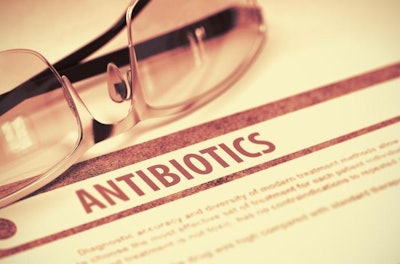
With the world’s population on the way to 9 billion by 2050 and antimicrobial resistance rising around the globe and threatening to constrain the efficient production of poultry, cattle and pigs, feeding the world with safe, affordable and nutritious meat proteins takes on the guise of the legendary Gordian knot, which seemingly could not be untangled.
Like in the intractable knot, which confounded thinkers of the ancient world, the challenges posed by the burgeoning need for food and the limits of its production seemingly loop upon themselves. As the need for food production expands, its production – unless wisely managed – could hurt the efficacy of the antimicrobial medicines needed to protect people from disease and keep them healthy.
It’s a conundrum addressed by leaders from the U.S. food production industry, the medical community and the nation’s veterinary corps at the 2016 Antibiotics Symposium hosted by the National Institute for Animal Agriculture.
Tyson’s Daugherty calls for sustainable solutions
Speaking at the Antibiotics Symposium, Christine Daugherty, vice president, sustainable food production, Tyson Foods, said, “We cannot and will not allow antimicrobial resistance to wipe out all of us, nor wipe out our food industry. The decisions to be made must be made on a sustainable food production level. We have to make these decisions that are a win for the planet, a win for the people and a win for the animals. Kneejerk reactions will not solve the problem.”
Daugherty echoed what had been said by many of the agriculture leaders at the symposium – that there’s a critical need for collaboration on antibiotic stewardship in agriculture. Naming the stakeholders on the issue – ranging from the medical community to consumers, NGOs and veterinarians – she said, “We need to get all of these groups to the table, because any solution that does not include the voices of everyone will be discounted.”
Questions on antibiotics from customers and critics
The concern about animal agriculture’s role in the development of antibiotic resistance is being expressed by customers and critics alike, according to Daugherty. “The questions are often not only very tough, but the answers may in some cases lead in the wrong direction.” She suggested that merely focusing on the number of pounds of antibiotics used may not be the best approach.
Borrowing from Roger Fisher, the author of “Getting to Yes: Negotiating Agreement without Giving In,” she said, “Change starts by listening and then starting a dialogue. People listen better if they feel you have understood them. So if you want the other side to appreciate your interests, begin by demonstrating that you appreciate theirs.”
She urged livestock and poultry producers to work together to come up a system of metrics and auditing that all producers can support. “A proliferation of audits is neither needed nor helpful,” she said. “The last thing any of us want is more audits and more paperwork because that does not allow us to do what our passion is today and that is to produce safe, high quality foods.”

















